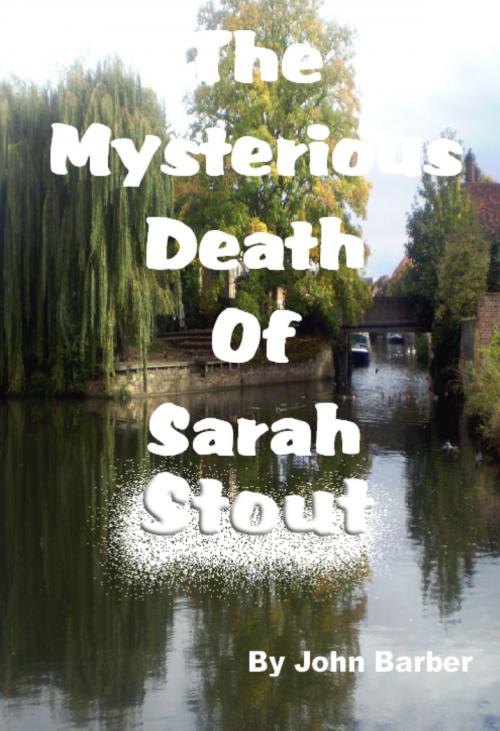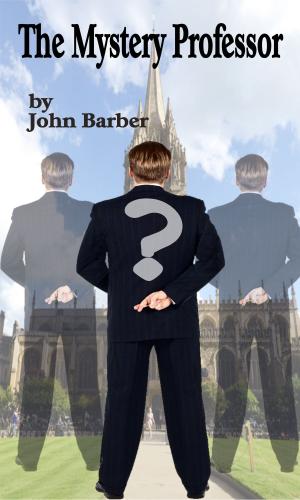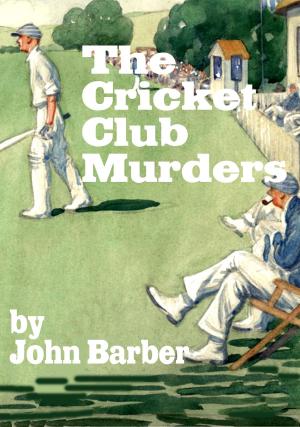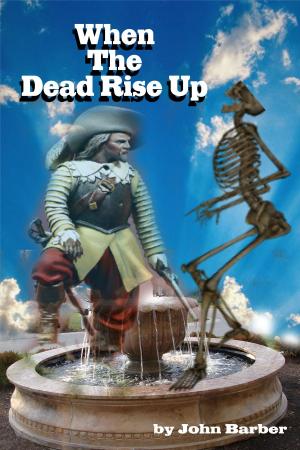The Mysterious Death of Sarah Stout
Nonfiction, History, Modern, 17th Century, Social & Cultural Studies, Social Science, Crimes & Criminals, Murder, True Crime| Author: | John Barber | ISBN: | 9780463151792 |
| Publisher: | John Barber | Publication: | November 1, 2018 |
| Imprint: | Smashwords Edition | Language: | English |
| Author: | John Barber |
| ISBN: | 9780463151792 |
| Publisher: | John Barber |
| Publication: | November 1, 2018 |
| Imprint: | Smashwords Edition |
| Language: | English |
At 10.45pm on Monday 13th March 1699 Sarah Stout the daughter of a prominent Quaker left the White Lion coffee house in Hertford in the company of Spencer Cowper, the son of the local MP. At six o’clock the next morning her lifeless body was found floating in the River Lea.
As the last person to be seen alive with Sarah, Spencer Cowper along with three of his friends were accused of her murder. The trial in July1699 attracted national interest long after the verdict was given but still left no satisfactory answers as to means, motive or suspect.
This famous mystery has now been re-examined with reference to the trial notes, contemporary pamphlets and modern forensic comments along with the author’s extensive local knowledge. A possible solution is now presented covering the last hours of a wayward local woman, in love with a man she could not have and how she met her end.
The case has continued to absorb historians and medical professionals. Both the prosecution and defence teams called on eminent doctors and surgeons to give evidence on the subject of death by drowning. Evidence was given by old sea dogs who had buried sailors at sea and from one eccentric doctor who backed up his own theories by drowning several dogs himself and noting the results in detail.
What occurred was a trial of a prominent barrister against a backdrop of the social, political and religious battles that raged inside the medieval town of Hertford at a time of increasing economic prosperity and a changing world outside its borders. At the centre was a charge of murder and if proven the death penalty. Four men’s lives were at stake but this outcome was almost overshadowed by the fight for political dominance and the reputation of the Quaker community in Hertford.
Equally important was that the evidence presented at the murder trial pushed forensic medicine further into the spotlight. Proof was not only presented, it was professionally constructed and tested.
In accordance with local custom an inquest that was held the next day on the 14th March 1699 ruled that Sarah had committed suicide whilst the balance of her mind had been disturbed. Her mother Mary Stout was not convinced and had her daughter’s body exhumed and examined by a group of local doctors and surgeons. These were predominantly members of the local Tory group opposed to the ruling MP’s William Cowper snr and William Cowper jnr who were both Whigs. As Mary Stout had desired they ruled out suicide, pregnancy and decided that Sarah’s death was the result of an assault.
A writ was issued against Cowper on a charge of murder. He was held in gaol to await trial. The three friends who he had joined at the Glove and Dolphin inn at 11.00pm on 13th March were also charged with murder but were granted bail. Spencer Cowper conducted his own defence.
Much of the trial centred around the testimony of Sarah’s maid Sarah Walker who stated that her mistress and Cowper and left the house at 10.45pm as she heard the door slam. Under then legal procedure Spencer Cowper was not allowed to give testimony from the witness box but did provide a statement in which he claimed that he left the Stout’s at 10.45pm and walked back to his lodgings in the centre of town where he met with a group of friends from the legal profession at 11.00pm.
The three friends were heard to speak about Sarah Stout in less than flattering terms and this was said to implicate them in her murder. There was in fact no evidence as to how she might have been murdered other than she was certainly found in the River Lea. The judge agreed and Cowper and his three friends were acquitted but there were always doubts as to Cowper’s innocence and wherever he went the cry went up ‘Who Killed The Quaker?’ This book attempts to solve the mystery.
At 10.45pm on Monday 13th March 1699 Sarah Stout the daughter of a prominent Quaker left the White Lion coffee house in Hertford in the company of Spencer Cowper, the son of the local MP. At six o’clock the next morning her lifeless body was found floating in the River Lea.
As the last person to be seen alive with Sarah, Spencer Cowper along with three of his friends were accused of her murder. The trial in July1699 attracted national interest long after the verdict was given but still left no satisfactory answers as to means, motive or suspect.
This famous mystery has now been re-examined with reference to the trial notes, contemporary pamphlets and modern forensic comments along with the author’s extensive local knowledge. A possible solution is now presented covering the last hours of a wayward local woman, in love with a man she could not have and how she met her end.
The case has continued to absorb historians and medical professionals. Both the prosecution and defence teams called on eminent doctors and surgeons to give evidence on the subject of death by drowning. Evidence was given by old sea dogs who had buried sailors at sea and from one eccentric doctor who backed up his own theories by drowning several dogs himself and noting the results in detail.
What occurred was a trial of a prominent barrister against a backdrop of the social, political and religious battles that raged inside the medieval town of Hertford at a time of increasing economic prosperity and a changing world outside its borders. At the centre was a charge of murder and if proven the death penalty. Four men’s lives were at stake but this outcome was almost overshadowed by the fight for political dominance and the reputation of the Quaker community in Hertford.
Equally important was that the evidence presented at the murder trial pushed forensic medicine further into the spotlight. Proof was not only presented, it was professionally constructed and tested.
In accordance with local custom an inquest that was held the next day on the 14th March 1699 ruled that Sarah had committed suicide whilst the balance of her mind had been disturbed. Her mother Mary Stout was not convinced and had her daughter’s body exhumed and examined by a group of local doctors and surgeons. These were predominantly members of the local Tory group opposed to the ruling MP’s William Cowper snr and William Cowper jnr who were both Whigs. As Mary Stout had desired they ruled out suicide, pregnancy and decided that Sarah’s death was the result of an assault.
A writ was issued against Cowper on a charge of murder. He was held in gaol to await trial. The three friends who he had joined at the Glove and Dolphin inn at 11.00pm on 13th March were also charged with murder but were granted bail. Spencer Cowper conducted his own defence.
Much of the trial centred around the testimony of Sarah’s maid Sarah Walker who stated that her mistress and Cowper and left the house at 10.45pm as she heard the door slam. Under then legal procedure Spencer Cowper was not allowed to give testimony from the witness box but did provide a statement in which he claimed that he left the Stout’s at 10.45pm and walked back to his lodgings in the centre of town where he met with a group of friends from the legal profession at 11.00pm.
The three friends were heard to speak about Sarah Stout in less than flattering terms and this was said to implicate them in her murder. There was in fact no evidence as to how she might have been murdered other than she was certainly found in the River Lea. The judge agreed and Cowper and his three friends were acquitted but there were always doubts as to Cowper’s innocence and wherever he went the cry went up ‘Who Killed The Quaker?’ This book attempts to solve the mystery.















